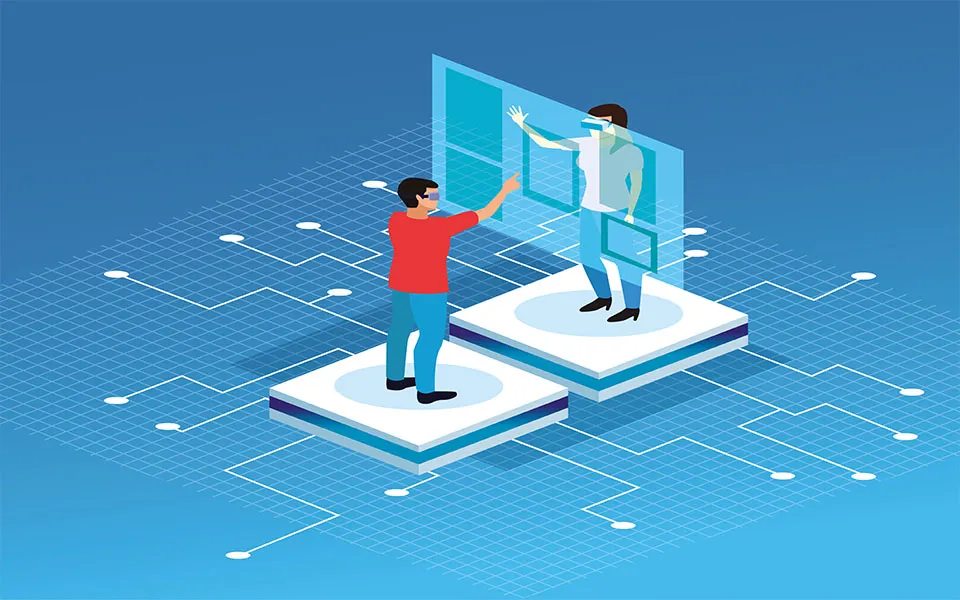Understanding URLLC in 5G Networks: Technology, Implementation, and Use Cases
In the rapidly evolving landscape of wireless communication, Ultra-Reliable Low-Latency Communications (URLLC) stands out as a crucial subset within the 5G network architecture. This article delves into the intricacies of URLLC, exploring its workings, its profound implications, and the diverse array of use cases it supports.

Ultra-reliable low-latency communications, or URLLC, represents a fundamental component of the 5G network architecture. Its distinguishing features include remarkably low latency and exceptional reliability, setting the stage for transformative applications across various sectors.
The Underlying Technology: How URLLC Works
To comprehend the marvel of URLLC, it is essential to dissect the technological advancements embedded in the 5G standard and network architecture. This includes, but is not limited to, more efficient data transfers, shortened transmission times through larger subcarriers, and improved scheduling facilitated by overlapping transmissions.
URLLC Spectrum: Frequencies and Performance
URLLC primarily operates within the 5G New Radio (NR) frequency ranges known as FR1 and FR2. FR1, also referred to as Sub-6, spans from 410MHz to 7125MHz, while FR2 extends from 24.45GHz to 52.6GHz. These higher frequency ranges offer optimal performance and data rates, contributing to URLLC’s exceptional capabilities.
Transmission Dynamics: Enabling URLLC Through Advanced Techniques
The transmission dynamics of URLLC involve the utilization of network slicing, a concept that allocates network resources intelligently to optimize traffic. Leveraging virtualization, network slicing creates distinct networks on the same physical infrastructure, each tailored to specific security, latency, and throughput requirements.
Additionally, 5G NR enables multiplexing across the same frequency, allowing devices to access the spectrum without waiting behind slower transmissions. The integration of technologies like beamforming and packet retransmission further reduces latency and enhances reliability, forming the backbone of a network capable of supporting URLLC.
URLLC Use Cases: Transformative Applications Across Industries
URLLC has laid the groundwork for a myriad of applications, with notable impact across various industries. This section focuses on specific sectors and explores how URLLC contributes to their operational efficiency and technological advancement.
Healthcare: Real-Time Monitoring and Augmented Reality
Healthcare facilities leverage URLLC to monitor critical patients in real-time, track assets across campuses, facilitate remote patient visits, and enhance staff training through augmented reality. The implementation of network slicing allows administrators to establish quality-of-service rules, ensuring the reliable scheduling and allocation of cellular resources within healthcare environments.
The deployment of public 5G over existing Wi-Fi networks, as a high-performance overlay, has become an attractive option for hospitals. This overlay network monitors wearable health sensors, manages live security feeds, and collects data from life-saving devices such as ventilators and dialysis machines.
Autonomous Vehicles: Safeguarding the Future of Transportation
Although fully autonomous vehicles are still on the horizon, enterprises and transport companies are actively incorporating URLLC to enhance staff safety, reduce operational costs, and automate logistics. URLLC’s role in ensuring continuous data streams with minimal latency is paramount for the efficient operation of autonomous vehicles.
Administrators strategically deploy a combination of indoor and outdoor access points to create a comprehensive private 5G coverage for vehicles. Small cells and repeaters further eliminate dead zones caused by obstacles like dense foliage, glass windows, and concrete walls.
Industrial IoT: Revolutionizing Industrial Processes
Industrial plants are embracing 5G, specifically tailored to meet URLLC requirements. The precise predictive monitoring and continuous data collection demanded by industrial processes are now achievable through URLLC, providing wired-like reliability and performance across the enterprise. This serves the needs of industrial IoT sensors, safety systems, and robotics, marking a paradigm shift from traditional wired networks.
URLLC on Private 5G Networks: Empowering Enterprises
The advent of private 5G networks empowers enterprises to liberate themselves from commercial carriers and assume complete control over their network infrastructure and cellular resources. This section explores the advantages of private 5G networks, emphasizing control, transparency, and cost-effectiveness for enterprises.
Control and Transparency: The Essence of Private 5G Networks
Unlike commercial carriers, private 5G networks provide enterprises with unparalleled control and transparency over their data segmentation and transport. This newfound control allows for optimized network management and resource allocation tailored to the specific needs of the enterprise.
Cost-Effectiveness and Simplification: The 5G LAN Architecture
Historically, designing and implementing a private mobile network were complex and costly endeavors, often requiring specialized expertise. The emergence of 5G LAN architecture has simplified this process, making URLLC accessible to any enterprise with an IT department. This shift not only reduces operational costs but also democratizes the implementation of URLLC technology.
Deploy URLLC with Horizon Powered’s 5G LANs
Horizon Powered offers enterprise organizations a comprehensive private 5G network solution, seamlessly delivered as an integrated turnkey system. Leveraging the streamlined 5G LAN architecture, organizations can effortlessly deploy plug-and-play cellular access point hardware throughout their environments, initiating operations within days rather than weeks.
Horizon Powered's Differentiation
Integrated Turnkey System
Horizon Powered‘s product lineup, in conjunction with their partnered solutions, offers an integrated turnkey system for a seamless and efficient deployment of private 5G networks. This ensures a hassle-free setup process for organizations looking to harness the benefits of URLLC.
5G LAN Architecture
The powerful 5G LAN Line of products from Horizon Powered allows organizations to swiftly deploy cellular access points, promoting a quick initiation of operations. This architecture is designed for simplicity and efficiency, reducing deployment timelines significantly.
Cloud-Based Administration
Administrators can effortlessly synchronize network access and QoS policies across the enterprise through Horizon Powered’s cloud-based dashboard (Horizon DMS). This feature provides a centralized control mechanism, simplifying network management and ensuring uniformity in policies.
Proactive Monitoring with Horizon DMS
Horizon DMS serve as the core of the private mobile network, offering proactive monitoring capabilities. This ensures that network service level objectives, including throughput and latency requirements, are consistently met, guaranteeing a reliable and high-performance 5G experience.
Seamless Integration with Existing Infrastructure
Horizon Powered’s partnered solutions seamlessly integrates with existing wireless and IT infrastructure, working in tandem with established enterprise Layer 2/3 network configurations. This integration occurs without the need for a separate IP network, minimizing disruptions to ongoing business operations.
Effortless Onboarding and Coexistence:
Onboarding can be conducted alongside existing infrastructure, enabling the coexistence of 5G LANs with other wireless and IT systems. This flexibility ensures a smooth transition to private cellular solutions without major disruptions.
If your business is considering the integration of private cellular solutions, Horizon Powered stands ready to assist. Contact our Horizon Powered or take advantage of the customer service to experience the unique capabilities of Horizon Powered’s 5G LAN solution.
Conclusion
URLLC emerges as a pivotal force within the 5G landscape, unlocking a realm of possibilities across healthcare, transportation, and industrial sectors. As technology continues to advance, and private 5G networks become more prevalent, the transformative impact of URLLC is poised to reshape the way we interact with and leverage wireless communication in the digital age.








